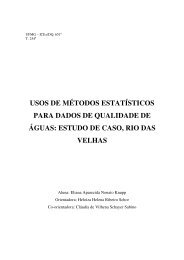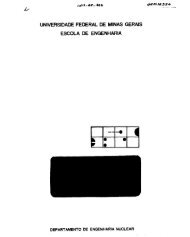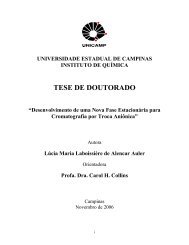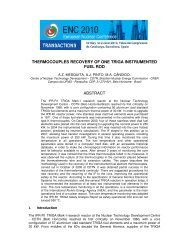ipr-r1 triga research reactor decommissioning plan - CDTN
ipr-r1 triga research reactor decommissioning plan - CDTN
ipr-r1 triga research reactor decommissioning plan - CDTN
You also want an ePaper? Increase the reach of your titles
YUMPU automatically turns print PDFs into web optimized ePapers that Google loves.
A policy regarding spent fuel or high-level waste disposal was not yet defined by Brazilian<br />
government. However, given that the legal framework regarding waste disposal is being defined, this<br />
issue will be discussed at the national level.<br />
Table 1. Fuel element and <strong>reactor</strong> characteristics [5]<br />
Fuel Element Type Aluminum Stainless steel<br />
Number 58 5<br />
Geometry Cylindrical Cylindrical<br />
Active length 35.56 cm 38.10 cm<br />
Cladding material Aluminum 1100F S. Steel AISI-304<br />
Cladding thickness 0.07 cm 0.05 cm<br />
Cladding diameter 3.73 cm 3.76 cm<br />
Fuel diameter (U-ZrH) 3.56 cm 3.63 cm<br />
Fuel-moderator material U-ZrH 1.0 U- ZrH1.6<br />
Amount of U (% weight) 8.0 8.5<br />
Enrichment (% 235 U) 20 20<br />
Table 2. SFA inventory of the IPR-R1 Reactor<br />
Facility # of Fuel Element inside the Core SFA Storage<br />
At Research Reactor Away Research Reactor<br />
IPR-R1 63 rods 0 0<br />
3. Life Time Estimation<br />
The MCNP transport code, the ORIGEN 2.1 burn-up code and MONTEBURNS radioactive decay<br />
code were applied to evaluate the total fuel ( 235 U) burn-up throughout 48 years of operation [6]. The<br />
results indicate a reduction of 96 g of 235 U mass, regarding to initial inventory of 63 elements, and a<br />
total burn-up near to 4%. Each rod has approximately 37 g that results a total mass 2.3 kg of 235 U<br />
inside the core. The total heat generated until June 2008 was evaluated in 2000 MWh.<br />
The estimated lifetime for the IPR-R1 is of more 34 years with a total burn-up of 3500 MWh. This<br />
estimation was performed by numerical simulations considering the following parameters: 68 fuel<br />
elements inserted on TRIGA core (note: there are 5 fresh stainless-steel elements that have never been<br />
used); operation at 250 kW (conservative hypothesis); and an average work demand based on the past<br />
48 operation years. The thermal power calibration since 2000 is based on the energy balance and<br />
presents an assign uncertainty of 7.5 % [7]. In this assessment a relative small burn-up of 12.1 %<br />
(mean of 68 elements) were observed, indicating a reduction of 307 g of 235 U mass. Even for the<br />
central elements the total burn-up would be less than 20% as recommend by the manufacturer.<br />
The IPR-R1 Research <strong>reactor</strong> could operate at least 3 decades by the actual work demand. Other<br />
factors must be considered as structural integrity of mechanical devices and fuel cladding,<br />
obsolescence of the instrumentation for measurement and control of operational parameters. All this<br />
factors can be managed and corrected by corrective and predictive maintenance, periodic inspections,<br />
acquiring new instrumentations and changing suspected or denied fuels.<br />
3.1. Radionuclide Inventory<br />
An attempt to assess the radionuclide inventory was made simulating the end of life of fuel elements<br />
(spent fuel) [8]. The radionuclide inventory assessment for the spent fuel, considering 68 fuel elements<br />
and final burn-up of 6000 MWh (maximum without core reconfiguration) was calculated by <strong>CDTN</strong>’s








